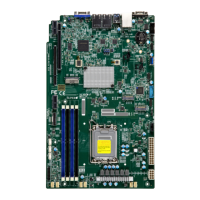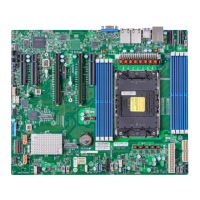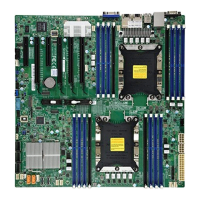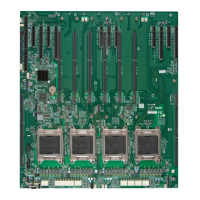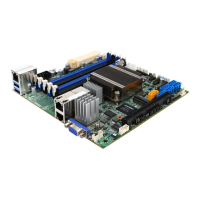15
Chapter 1: Introduction
I/O Devices
• Serial (COM) Port
• SATA 3.0
• U.2
• Video Connection
• Audio
• One serial port on the rear I/O panel (COM1)
• Eight SATA 3.0 ports at 6 Gb/s (SATA0 – 7)
• Two U.2 connectors for NVMe 2.5" SSD drives (U.2-1, U.2-2)
• One VGA port on the rear I/O panel (VGA)(IPMI only)
• One 7.1 HD audio port on the rear I/O panel
Peripheral Devices
• One front accessible USB 2.0 header for two USB connections (USB0/1)
• Two USB 2.0 ports on the rear I/O panel (USB2/3, Type A)
• One front accessible USB 3.2 Gen 1 header for two USB connections (5Gb, USB4/5)
• Four USB 3.2 Gen 2x1 ports on the rear I/O panel (10Gb, USB6/7, USB8/9, Type A)
• One USB 3.2 Gen. 2x2 port on the rear panel (20Gb, USB10, Type C)
• One front accessible USB 3.2 Gen 2x2 20-pin header for one USB connection (20Gb, USB11)
BIOS
• AMI BIOS
• ACPI 3.0 or later, PCI rmware 4.0 support, BIOS rescue hot-key, SPI dual/quad speed support, Real Time Clock (RTC)
wakeup, and SMBIOS 3.0 or later
Power Management
• ACPI power management
• Power button override mechanism
• Power-on mode for AC power recovery
• Wake-on-LAN
• Power supply monitoring
System Health Monitoring
• Onboard voltage monitoring for +/-12V, +5V/+5V standby, +3.3V, and +3.3V standby
• Onboard temperature monitoring for CPU, VRM, LAN, PCH, system, and memory
• 7+1 CPU switch phase voltage regulator
• CPU/System overheat control
• CPU thermal trip support
• Platform Environment Control Interface (PECI)
Fan Control
• Fan status monitoring via IPMI connections
• Dual cooling zones
• Low-noise fan speed control
• Ten 4-pin fan headers
System Management
• SuperDoctor® 5
• Chassis intrusion header and detection
• Intel Converged Security and Management Engine (CSME)
Firmware Integrity/System Security
• Trusted Platform Module (TPM) support

